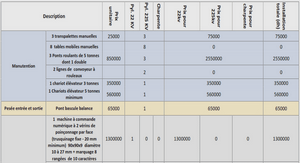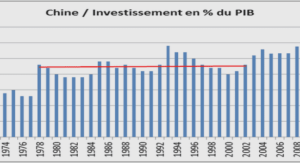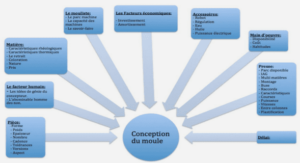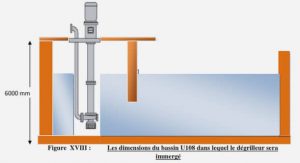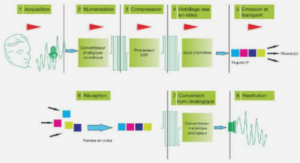Incarceration Ideologies in Modern Societies in Prison Writings
The Actors of the Ideological World
In the opening letter of the novel Soledad Brother, George Jackson writes: ―That poor, uneducated, disorganized man, who finds himself a convicted criminal, is simply the end result of a long chain of corruption and mismanagement… You have to examine these people from director down to guard before you can logically examine their product.”30Thus, the logical point to begin any investigation into the problems of prisons is with the configuration which embodies it. Therefore, such organization is only a product the producers of which deserve a serious concern. That is to say, this long chain of investigation will start with a study of the actors of these products from top to bottom before examining their products. Who are these actors? How are they organized? Which role do they play in the elaboration of the product that we attempt to study? The actors of the ideological society are shaped as in a fiction movie, a ―nowhere to run‖ story in which visible and invisible actors share the roles. The invisible actors think and write the scenario and dictate the tactics which have to be followed for the progress of the story. They also dictate the rules and decide of the rights to death and survival in the set-up. As for the visible actors, they should only act following the characters they have been attributed to. They were to die if necessary, struggle to survive, suffer or go to prison to enable the imperceptible commandants to come to a happy end. But beyond this classification, we can as well, make out direct and indirect interveners. The former deliberately chose to prevail and promote ideological theories and thoughts, whereas the latter promotes these ideologies through the medium of their authority, statute, belonging, sex….. Thus, executors of order transmit the ideologies operated to govern society from the invisible commandants (at the top) to the vulnerable actors (at the bottom.)
The Invisible Commandants
In fact, we label the invisible commandants those who pretend leading society but are really nowhere to be seen. In return, their orders emanate from every social corner and from every side of human get-up-and-go. In any case, they are physically invisible without any direct contact with the touchable world, even if their directives and life‘s lessons have a high regard for societies. The theory of a ‗third face of power‟31, or invisible power has its roots partly, in Marxist pervasive theory of ideologies, values and beliefs in reproducing class relations and concealing contradictions. Marx recognizes that economic exploitation is a serious driver behind capitalism, but it is not the only one. The system was strongly reinforced by a dominance of ruling class ideas and values, emanating from an ‗invisible hand32‟. Hegels went further on linking such ‗third face of power‟ to a ‗false consciousness‟ that probably keep a part of society from recognizing and rejecting their oppression34. Such a concern is also particularly evident in the thinking of Lenin, who argued that the power of ‗bourgeois ideology‘ was such that, left to its own devices, the proletariat would only be able to achieve ‗trade union consciousness‘, the desire to improve their material conditions but within the capitalist system35‘. 31―The third face of power” is a term used by Marx in his pervasive theory of exploitation of the proletariat by the dominant class in the capitalist system. 32The invisible hand is a term used by Adam Smith to describe the unintended social benefits of individual actions. The phrase was employed by Smith with respect to income distribution (1759) and production (1776). 33―False consciousness” is a term used by sociologists and expounded by some Marxists for the way in which material, ideological, and institutional processes in capitalist society mislead members of the proletariat and other class actors. These processes are thought to hide the true relations between classes and the real state of affairs regarding the exploitation suffered by the proletariat 34Andrew Heywood, Political Ideas and Concepts: An Introduction, London, Macmillan, 1994, p.85 35 Political Ideas and Concepts: An Introduction, op, cit, P.85 24 Such faithfulness of the real word to the invisible one is current in African and American social edifices. Thereby, in our corpus, orders commanding society are most of the time referred to anonymity. In his fiction, Ibrahima Ly focuses several times on a social scheme which the pattern drawers are never flashed. In return, the executors of their orders are apparent through the whole story. Thus, in Toiles d‟Araignées, the jailer Bakary points out to Mariama: “Il faut tuer dans l‟œuf tout sentiment de révolte, toute expression de dignité, toute affirmation de soi ―36, without really explaining to the young girl the reason why, and for the pleasure of whom should her dignity, feelings and personality be taken away. In such scenario, Bakary is charged to execute a vital, audacious and feeble order which the scenarist is indiscernible in the story. In such a traditional hierarchy of Belaya the first actors of social edifice are invisible. Such absurd faithfulness of society to inscrutability continues in Les Noctuelles Vivent de Larmes when a part of society is tightly convinced that they are doomed to capture and enslave the other part, less important as human beings. A slave trader indicates: “Je dois le dresser, lui faire accepter son nouveau statut. L‟enfant devra ignorer jusqu‟à son origine éthnique.”37Like so, buying slaves and treating them as they please cannot satisfy slave holders, rather they seem to be invested of a divine mission which consists in delivering such inferior beings whose statute of poverty is worse than a malediction. So, in such social epitome portrayed by Ibrahima Ly, it is a pact for a part of society, in particular the traditional chiefs, to enslave and train people symbolically penniless and poor. The same social scenario is observed in the novel My Life is My Sun Dance by Lenard Peltier. Indeed, the human right activist is accused of a murder he did not commit and sent to prison without exactly knowing whom to blame. Throughout the whole story, he alludes to an unknown force, a mandatory potency that rules like a god, dictates the laws and compels innocent people to suffer. In an article entitled, Leonard Peltier and the Indigenous People: our Lives have Meaning, Lenore Jean Daniels attempts to illuminate the flam constancy which exists between the invisible and visible world in Peltier‘s story: 36Toiles d‟Araignées, op, cit p.87 37Les Noctuelles Vivent de Larmes, op, cit, p. 22 25 Some people know the facts surrounding October 12, 1492, but not many have sat long enough to feel the impact of the Great Sorrow against humanity. Fewer still truly recognize the willful destruction of people, cultures, and lands; the mandate forcing survivors to relocate in mass; the government neglect and the lies, deceit, and outright heavyhanded enforcement of legalities backed by repressive presence of police and military operatives – long before the ghettoizing Black urban communities, long before the 1948 Nakba in Palestine.38 Accordingly, an ideological malediction had been hitting the U.S and Native Americans since the discovery of that land in 1492 by Christopher Columbus. Jailers, militaries and the police as invested with a divine mission; destroy people‘s culture, dignity and lands without the slightest lawful motive. Even the government is inapt to attribute these absurd responsibilities. This comes to tighten up the thesis about the presence and omnipresence of invisible forces in the political and traditional social hierarchies, which to all appearance lead society. However, that set a huge problem of legitimacy as far as orders depleted to govern those societies are concerned. In fact, the invisible machine setting in motions the organization of the American society; have echoed through history, and most of the time with a religious motive. In his work entitled People‟s History of the United States, Howard Zinn cited an extract of Columbus letter in his second voyage back home. ‗‗Let us in the name of the Holy Trinity go on sending all the slaves that can be sold”.39Thereby, the first explorers sent on the native lands were invested not only to exploit the rich lands they find there, but also to save autochthon populations whom they regarded as savage people to be humanized at all costs. The explorers‘ civilizing mission was irrevocable, much more irrevocable than it was thought to be, even if they had to kill all of the Native people to attend their objectives. The invisible machine do not still organize, it also destructs if necessary. In this way, Zinn cited another explorer named Bartolome de Las Casas who came along with this new ‘exploration’ to the West Indies, he noticed all the atrocities that were happening and documented them. In his 38 Jean Daniels Lenore, Leonard Peltier and the Indigenous People: our Lives have meaning, The Black Commentator Editorial Board, 2002. 39Howard Zinn, A People’s History of America. New York, New York, USA. Harper Collins Publishers, 1995, p.4 26 book History of the Indies, he says ‘…Our work was to exasperate, ravage, kill, mangle and destroy‖ 40 . Somewhat comparable to those first explorers was “the invisible empire”41 , which swept over large parts of the south during the late 1860s. The invisible empire essentially acted to enforce codes and laws that the official constitution of the USA did not recognize at that time. Thus, as a supreme and invisible organization, it was strict as far as white supremacy was concerned through “a counterrevolutionary terror”. Their mission was to resist violently to any constitutional attempt of the government to give a few crumbs of political power to blacks. In spite of their official inexistence, they set as guardians of white supremacy, which they succeeded in imposing to the whole society. They set as rivals of the law, but in reality they were the laws, because ―the white skin‖ was above all a badge of supremacy cared about in all public locations: schools, courts, prisons, and wherever else where whites and others were in contact. As Peltier writes, the government was the first protectors of vigilant movement which milted for the safeguard of white supremacy: ―They armed the GOONs with the latest military weaponry, and gave tacit approval to the reign of terror that soon swept the rez.”42 But paradoxically, in view of the way these societies are schemed, it is apparent that the directives of these invisible commandants are essentially axed on people‘s past and the issues of their ancestors. That goes without saying that those whose ancestors were regarded as inferior beings are doomed to receive from society unfunded imperatives which the issues are to maintain them in a statute of eternal inferiority. In response, those whose ancestors played the leading role on activities such as slavery, the discovery of fertile lands, the caricature of others‘ culture until the great inventions and discoveries, should be rewarded and positively discriminated by the invisible commandants. As George Jackson points out: Their abstract theories, developed over centuries of long usage, concerning economics and sociology take the form that they do”43Accordingly, society blindly walks following the past‘s footsteps. Otherwise, the submission of social orientation to invisible commandants is a way of perpetrating an eternal past. It is as well, a way of initiating the refusal of debate. In reality, if most of social actors position as executors of orders or subalterns, social norms that are preceded dwell theoretically uncontestable.
The Executors of Orders
On the one hand, all societies studied above reveal a hierarchic construction underpinned on a block of superior and invisible commandants whose copies are omnipresent in the most miniscule cellule of these configurations. On the other hand, in view of the way these lives, we can say that orders that govern their societies are not more important to people who give them than to those who are bound to execute them. Thus, at the rear of these imperceptible holders of life right, there are also the executors of orders. Following the configuration of the societies we study, an executor of order is somebody who holds an inferior raw; according to the task he is attributed in the political or traditional hierarchy. Otherwise, it is a secondary character depending on an invisible one, much more important. In the scenario of the ideological society, executors of orders are not those who have thought and written the film, but those, charged to make the actors respect their pacts and be faithful to the progress of the story. Their role is to turn into reality the story of other characters, more principal: turn consciousness into reality. Actually, in our novels under study we can consider executors of order all those who have the authority to give orders but are logically unable to initiate them. In the novel Toile d‟Araignées, the commandant, the jailer Bakary, Mariama‘s father positions as the main executors of order. In Les Noctuelles Vivent de Larmes, there are the slave owner Yigo and the warrior Balla Yé Warayé. In ―My Life is My Sun Dance‖, the judge, the two FBI agents can be catalogued, whereas in Soledad Brother the pigs are the most illustrious executors of order. Following such considerations, the executors of orders could be classified into two important categories: the direct executors and the indirect ones. The role and behavior of the direct protector can be understood through the conduct of Mariama‘s parents: Harouna and Hawa. By refusing to marry the old Bakary, her parents quickly dissociate themselves from her. In reality, the social apparatus which determines and guide adolescents‘ fate in the village does not allow such kinds of solitary drifts. All the temptations of the mother, Hawa, are designed to help her daughter come back to her senses. The parents know that they must prevent her from doing that to avoid being hurled by the whole community. Their obligation is to convince her, by all means, to give up 30 her decision. Nobody could imagine the feelings of Mariama‘s parents who fought to give her an education which they think is the best. Such a teaching is exclusively based on the respect of traditions, of the laws of elders, of the decisions from parents and total obedience to social continuity. Harouna, in the following passage shows all his temperament to make her daughter believe how a father‘s pronouncement is vital within a family.« Si j‟entends de toi, la plus petite objection, je te maudis, tu quitteras la maison et aucun de mes parents ne te recevra ! Le père la saisit par la peau de la nuque et alla l‟enfermer dans le grenier. » 49 In fact, Harouna, as regards of his patriarchal position in society prefers to warn his daughter to get out of the dark room of ignorance. Mariama is supposed to disregard that symbolic significance of a social executor of order and must be put back on earth at all costs. His father is the supreme chief of the family, the executor of orders whose role is to promote inherited traditional ideologies within his familial environment. He will be responsible for every single drift. According to the commandant, Harouna seems to undervalue his mission in society. Hence, reminding him of it becomes an exigency. Ta fille a osé contredire l‘autorité. Nous t‘aurions arrêté et maltraité si nous ne te savions discipliner et honnête. Nous savons que tu condamnes Mariama autant que nous. C‘est une gamine qui ne mesure pas la gravité de ses actes. Nous t‘aurions fait disparaitre, toi et toute ta descendance si encore une fois nous n‘étions pas convaincu de ta parfaite collaboration. Nous te donnons l‘occasion d‘emmener ta fille à la raison et au bon sens. 50 Accordingly, the relentlessness of Harouna to make his daughter come to her senses is far from a bonus-share. It even goes above a paternal obligation toward one‘s own child or a desire to protect the traditional action. Indeed, Harouna blindly obeys to an ideological scenario in which he is a key actor, a direct executor of order. Mariama‘s father had signed this pact, the very day he was born as a man in this village of Belaya, in a strongly traditionalized family. Then, he received an education by filiations based on an unconditional respect to the customs and beliefs of his culture. Later on, familial burdens came to overload this task. Now, Harouna must respect his part of the bargain, which he has still been trying to do until the day one of his daughter came to overthrow the whole schema. Then again, it seems that Harouna is not the only one under contract in this community of Belaya. In reality, everybody holding a traditional inheritance in this community directly works for the fictive traditional society. So, the actors of the traditional society are as well direct actors of the ideological world. In other word, they work for the traditional society and are very conscious about it, whether they like it or no. Their role is to promote the traditional ideologies, the traditional education they received from their parents should reach the new generation and they are the scapegoats. In the social configuration set in the fiction Les Noctuelles Vivent de Larmes, slave traders and slave owners play analogous roles as far as orders depleted to govern society are concerned. In such a sphere, slavery remains the main activity. As a result, executors of orders are doomed to maintain society is such a rhythm from slave owning to slave trading. On nourishing slavery, they gain respect and consideration from their community. Thus, the warrior, ―Balla Wé Warayé‖ and the slave owner, Yigo become celebrities in the community, while being respected by each and all because of the activity they have embraced. Despite the illegitimate character of their occupation, the writer describes them as important actors, avantgardist of the traditional heritage in the community. Le cavalier était connu dans toute la région sous un sobriquet éloquent ―Balla yé Warayé‖. Les filles le chantaient et rêvaient de figurer un jour dans son Harem. Il tirait sa célébrité surtout de son courage, légendaire, et plus particulièrement du fait qu‘il ne payait son ―Dolo‖ et son tabac qu‘avec le prix des femmes et d‘enfants enlevés… Le marchand d‘esclaves, Mouhamadou Kouma, alias Yigo, était une grande notabilité qui jouissait du respect de tous” 51 51Les Noctuelles Vivent de Larmes, op, cit, p. 19 32 Such a social epitome, as it is presented, functions under the rhythm from slave holding to slave trading, which makes of slaves traders, slaves hunters and slaves owners incontestable pioneers. The strongest men capture defenseless women and children to sell them to notabilities. Also, peasants would exchange their wives and children against miserable amount of money, whenever they were ruined. In such a fictive society, traditions equal slavery and slavery equals respect. So, respecting slavery and its purveyors stands for respecting the traditional. It is common belief in the community that all those who work on the order of slavery are heroes, because they directly perpetrate the traditions. Their role is to maintain the traditions inherited from their ancestors. Contrary to the actors of the traditional world, those of the political authority have chosen a work which often obeys to political ideologies with which they are compelled to fold. Hence, one can say that the judge, the commandant, the gendarme, the jailer are chosen jobs by which the promotion of ideologies should inevitably pass. For example, prison which is the depository of political ideologies, their last recourse to make individuals such as Mariama come to their senses, can be regarded as a middle where the actors promote the political repressive ideologies of the ruling class. While people working around it wrongly bear in mind that their role is to torture maximally all those who contact the space, prison lays behind much more complex ideals of predominance and social control. The judge Salamanta in these words tries to elucidate such doctrine. Je ne sais pas sur qui tu comptes en haut lieu mais tu plieras l‘échine comme tout le monde. Tu as tenu tête à toutes les autorités mais la prison t‘éclairera les idées. Ton petit godelureau t‘y retrouvera, ficelé comme un panier de cola. On ne défie pas impunément la loi. Cette fille a la tête très dure. Elle n‘a aucun respect pour sa famille ce qui est un crime pour tout citoyen de ce pays. Comment considérer le chef de l‘état comme un père quand on bafoue celui qui nous a donné le jour. Ses oreilles sont restées closes aux sages conseils du commandant. Les corrections ont eu sur elle l‘effet d‘un pet d‘âne. Notre beau pays ne saurait être une pétaudière. La prison reste un dernier recours pour que 33 cette fille ne soit pas perdue à jamais. J‘enverrai demain un ordre de mise en demeure. 52 Even though the case of Mariama is regarded as a familial affair, a challenge to its own traditions, political authorities seems to have far much interest on the matter. Indeed, the judge Salamanta made a good summary of the situation. He situates the degree of responsibility of each authority: the chief, the president and the commandant. On refusing to marry the old Bakary, Harouna‘s daughter derided the rules of citizenship and good manners of the whole society. Now, the political ideologies built from the president to the father have been ridiculed by the young Mariama. Besides, it is the reason why, the representatives of the political world hound on her. Through her small act of refusal, it is the responsibility of each of these political actors which are threatened. That helps us; once again, understand this complex hierarchical organization of that society whose actors work in connection. In the political environment each actor is a sample of ideologies seeing that the works they have embraced are depository of political fictions such as prison. According to George Jackson in Soledad Brother, each political institution dangerously bound together by an untenable force. The latter is supported by ideals which don‘t really take hold until one gets into the upper levels of the power pyramid.
INTRODUCTION |

